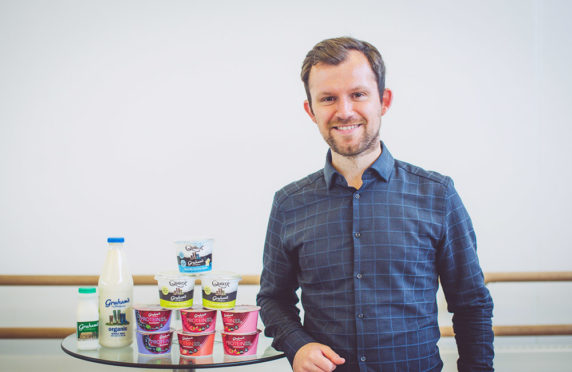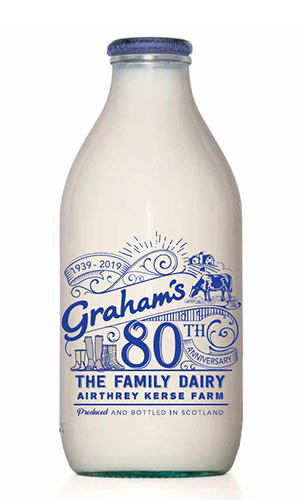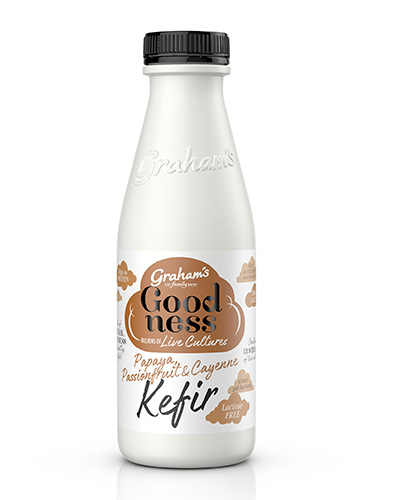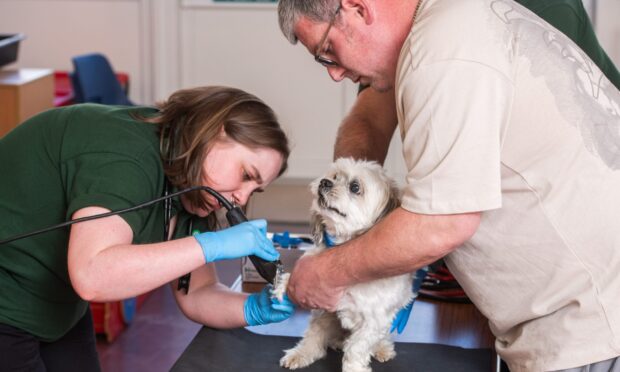When we were growing up, we drank milk every day because it was well-known that it was an important source of calcium that boosted the health of our bones, teeth and nails. But did you know that there are numerous other lesser-known health benefits of drinking milk and eating dairy, which is why we should consider increasing our consumption in adulthood?
Rich in vitamins and nutrients, milk can also improve our physical and mental wellbeing as it contains fatigue-fighting and mood-boosting vitamins such as B2, B5 and B12. Calcium contained in milk is also known to regulate your heartbeat and make sure your blood clots normally, according to the NHS website.
“A 200ml glass of milk provides 36% of the daily recommended intake of vitamin B2 (riboflavin) which plays an important role in the health of our skin, vision and nervous system as well as helping to reduce fatigue,” says Dr Oliver Witard (pictured above), a senior lecturer in nutrition and exercise metabolism at King’s College in London.
“Vitamin B5 is important for mental performance and also for reducing fatigue, while B12 helps support mood, nerve function and our immune system.”
Milk is one of six food groups that are categorised as dairy and they include: yoghurt, cheese, butter, quark and cream. As well as the above dairy products providing our bones, teeth and muscles with essential goodness, they also contain vital proteins which could help us stay healthier and active in later life.
Research has shown that dairy can help reverse age-related loss of muscle mass (known as sarcopenia) that affects balance, strength, mobility and posture – upping our dairy consumption can build and boost muscles as we get older, as well as reducing our risks of osteoporosis.
Dr Witard, formerly of Stirling University, added: “Dairy-sourced proteins have effective muscle-building properties and the potential means to preserve muscle mass and function in later age.
Proteins derived from dairy can stimulate muscle protein synthesis, therefore preserving muscle mass as we grow older.
“Several studies have shown that dairy proteins exhibit greater muscle anabolic potential than plant based proteins and other alternatives.”
Some people may stay away from milk because it contains fat; however, it forms part of a healthy, balanced diet. And if you switch to 1% fat or skimmed (red top) milk, your body will still be consuming the important nutritional benefits of milk, with hardly any fat.
We cannot ignore the growing trend of switching from dairy milk to non-dairy alternatives, but this lifestyle decision is reducing the amount of goodness that we are feeding our bodies.
Dr Witard is often asks about the nutritional difference between milk and, say, almond milk.
He says the difference in the amount of protein contained in a standard glass of each is significant – with 8g in a glass of milk, compared to just 1g in almond milk. The recommended daily amount for older adults is 0.8g of protein per kg of body weight (so for an 80kg man that’s 64g and for an 65kg woman its 52g).
It is also worth pointing out that there are fewer ingredients in milk and no added sugar unlike its milk-like alternatives. Another important factor about milk is its hydrating qualities – it is a great thirst quencher, so if exercising, consider milk as it “actually outperforms other commercially available drinks in terms of its hydration potential”, says the nutrition expert.
The benefits of dairy:
The health benefits of nutrient-rich milk and dairy products are many and varied. They’re good sources of calcium, vitamin D (much needed in these winter months) and are high in protein. They also provide potassium, magnesium, vitamins A, B12 and riboflavin as well as being all natural. And far from just being a breakfast option, dairy can be enjoyed throughout the day as part of a meal, snack or even to rehydrate after a work-out. Here we round up just a few options:
GOLD TOP MILK
The benefits of Jersey products are little-known, but impressive nonetheless. Milk from Jersey cows is 18% higher in protein and 20% higher in calcium. The increased protein and calcium levels aren’t where the benefits end either. Milk contains zinc, iodine and vitamins A, B, D and E – and the levels of vitamins A and D are higher in milk from Jersey and Guernsey cattle than in standard milk.
GOODNESS ICE-CREAM
For the sweeter-toothed among us who enjoy a little after-dinner treat, lower-calorie ice cream is a great choice. There’s 20g of protein in each tub from the Graham’s Goodness range, but only a quarter of the calories of typical ice creams – and it’s lower in sugar too, meaning you can indulge without over-indulging.
FAT-FREE, VERSATILE QUARK
For those looking for a protein-packed, low fat breakfast, quark is naturally fat-free and low in salt. Its versatility means it can be enjoyed with waffles, pancakes and toast at breakfast, with a salad at lunch, and even as a low-fat accompaniment to dessert.
PROTEIN 22
High in protein and fat free, Protein 22 contains 22g of protein per pot, making it the perfect breakfast or post-workout snack.
SKYR
Made with pure Scottish milk, live cultures and carefully sourced fruit, this deliciously thick, protein-packed yoghurt is making its way to your taste buds. It’s packed full of calcium, fat free, high in protein and low in sugar.
GOODNESS KEFIR
Goodness Kefirm (pictured above) is loaded with probiotics which can provide all kinds of health benefits for your gut. It’s lactose free, contains billions of live cultures, 13 strains of live bacteria and is high in protein, calcium and vitamins too!
Health expert Dr Witard busts the dairy myths:
Eczema: There’s no evidence that milk or dairy causes eczema which is an inflammatory response.
Asthma: And there’s also no science to support the suggestion that milk or dairy causes asthma. Family history is more likely.
Fattening: There is a misconception that dairy foods are fattening. Not only is there no scientific evidence for this, but a number of studies have found there may be a potentially beneficial role of consuming dairy as part of a healthy balanced diet for weight management.
Acne: There is no evidence that milk or dairy causes acne which is more likely to be hormone related.
Heart disease: Saturated fats have been associated with cardiovascular disease. While dairy does contribute to saturated fat intake, it also provides calcium which is thought to explain the apparent cardio protective effect of dairy intake on the risk of developing heart disease.
*For further information on milk and dairy products from Graham’s The Family Dairy and great recipe ideas, visit the website by clicking here.












